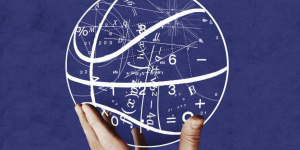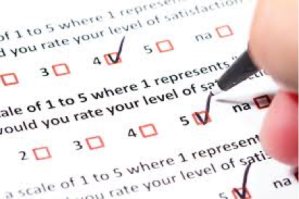This week’s EXSS Impact post was developed by Erianne Weight, who is an Assistant Professor in the area of Sport Administration. Erianne’s research is directed by the vision of increasing and enhancing opportunities for intercollegiate athletics participation and education with a current focus of quantifying the benefits of participation in intercollegiate athletics. Many thanks to Erianne for providing this week’s EXSS Impact content.
 Nearly a year has passed since the Wainstein Report[i] was released at the University of North Carolina at Chapel Hill. As a member of the faculty, I have felt the dynamic on campus evolve from shock, anger, sadness, and disappointment, to what I now sense as a determined resolve to reaffirm our values and channel the Carolina spirit of innovation in education held by the founders of our institution – the first public institution of higher education. It is with this resolve we must use this moment in history to reflect upon the role that intercollegiate athletics plays within the academy and society.
Nearly a year has passed since the Wainstein Report[i] was released at the University of North Carolina at Chapel Hill. As a member of the faculty, I have felt the dynamic on campus evolve from shock, anger, sadness, and disappointment, to what I now sense as a determined resolve to reaffirm our values and channel the Carolina spirit of innovation in education held by the founders of our institution – the first public institution of higher education. It is with this resolve we must use this moment in history to reflect upon the role that intercollegiate athletics plays within the academy and society.
Why did you do this study?
In a previous EXSS Impact blog post exploring reform approaches in intercollegiate athletics, we discussed the tension between athletics and the academy. Many university stakeholders fully support athletics within the academy and view it as an educational endeavor complimentary to the university mission with added brand-building, relationship-forging, and student-drawing benefits. On the other end of the spectrum, stakeholders have condemned the academy for allowing athlete exploitation, excessive commercialism, and unprincipled behavior that undermines the educational mission of the university. Regardless of perspective, athletics has traditionally been supported within the university’s organizational structure as an extra-curricular activity peripherally related to the university mission.
Previous EXSS Impact research examining the impact of intercollegiate athletics on the marketability of athlete participants revealed tremendous educational value attributed to participation in intercollegiate athletics, with employers indicating athletics participation (particularly when paired with captain or All-American status) as an experience that sets candidates apart in the application process. Building on this and other studies that have explored the educational effects of participation in athletics, we examined a set of psychological and intellectual measures as a part of a broad effort to quantify the legitimacy of athletics as an educational endeavor.
What did you do and what did you find in this study?
 We gathered data through electronic survey completed by a sample of active undergraduate students (n = 914) and intercollegiate athletes (n = 435) from three Power-5 Conference institutions. The survey included nine embedded subscales which measured achievement-striving, self-discipline, self-esteem, teamwork, leadership, body awareness, and nutrition, health, and injury recovery knowledge.
We gathered data through electronic survey completed by a sample of active undergraduate students (n = 914) and intercollegiate athletes (n = 435) from three Power-5 Conference institutions. The survey included nine embedded subscales which measured achievement-striving, self-discipline, self-esteem, teamwork, leadership, body awareness, and nutrition, health, and injury recovery knowledge.
 Of the five psychological measures, athletes scored significantly higher on teamwork, leadership, and achievement-striving scales. Additionally, athletes scored significantly higher on the nutrition, health, and injury recovery knowledge scales, but mean differences were small, and knowledge was weak for both athlete and non-athlete populations.
Of the five psychological measures, athletes scored significantly higher on teamwork, leadership, and achievement-striving scales. Additionally, athletes scored significantly higher on the nutrition, health, and injury recovery knowledge scales, but mean differences were small, and knowledge was weak for both athlete and non-athlete populations.
How do these findings impact the public?
The findings from the psychological measures provide some evidence of education through athletics. Similarly, the nutrition, health, and injury recovery knowledge scales demonstrate some amount of knowledge gain for the intercollegiate athletics sample, but also reveal a need to pair traditional education with experiential training. In an era of skepticism about the role of athletics within the academy paired with significant public subsidy for athletics programs, it is important to understand the impact of athletics at the individual, university, community, and societal levels in order to chart a path for the future. As we stand at a crossroads in intercollegiate athletics legislation, perhaps it is time to ponder how the industry might be affected if we recognize the art and science of intercollegiate athletics and facilitate an organizational structure that values education through athletics.
_____________________________________________________________
[i] The Wainstein Report outlined nearly two decades of academic misconduct affecting over 3,100 students enrolled in courses largely overseen and graded by an administrator in the Department of African and Afro-American Studies at UNC-Chapel Hill. Knowledge of the “paper-classes” was held by several individuals within the Academic Support Program for Student-Athletes (ASPSA), and 47% of the enrollments were by student-athletes, mostly on the football and men’s basketball teams.
Michael Morgenstern for The Chronicle
\
